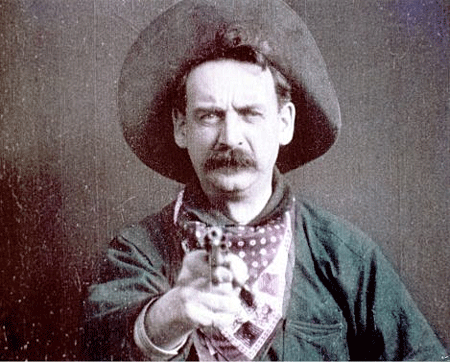How long is too long for a movie?
How long is too long for a movie?
There have always been long movies in Hollywood. But, all of a sudden many more are getting even longer.
By Jeffrey Cole
How do you know when a movie is too long?
Harry Cohn knew.
The legendary and much-feared head of Columbia Pictures in the 30s and 40s shared his secret: when sitting alone in a projection room, he could always tell when a film was too long and not good “if my fanny squirms…it’s as simple as that.”
That led to Herman Mankiewitz, the great co-writer of Citizen Kane, grumbling, “Imagine, the whole world wired to Harry Cohn’s ass!”
A lot of fannies should be squirming in movie theaters these days.
It used to be that only well-established, award-winning, and money-making directors could command extra-long films. It was a badge of honor—regardless of whether it was necessary or good for the film. Big directors got the final cut on their films. No studio exec could cut them down to size. But those directors were few.
Some films, I estimate about 20% of those that run 160 minutes or more, warrant that much time to develop characters and tell a compelling story. The other 80% are bloated and indulgent.
The problem extends beyond just the length of movies. A recent trend over the past decade or two has been turning films into Part I and II. These are not sequels, another form of bloat, but the lengthening of a single story. The logic seems to be this: if a story is important and majestic at 150-200 minutes or more, then isn’t it even more majestic at 300 minutes split into two parts?
Length inflation has spread to streaming.
The standard length of a streaming series or mini-series is eight to ten episodes. Many need as much as ten hours to tell their stories. But just as many fizzle out after three to five hours; these can only justify their length as a business move to amortize costs.
The answer to how long can we sit in a theater before we get antsy has less to do with the human attention span than how the studios and theaters have conditioned us.
The birth of a moviegoing nation
 The earliest film makers at the beginning of the twentieth century didn’t have much faith in the attention span of their audiences. The films were silent, shown initially on machines, later projected onto screens.
The earliest film makers at the beginning of the twentieth century didn’t have much faith in the attention span of their audiences. The films were silent, shown initially on machines, later projected onto screens.
One of the first films to tell a story (instead of just showing visuals with movement) was Edwin Porter’s The Great Train Robbery in 1903. It was most famous for an ending that featured one of the robbers pointing a gun directly into the camera and terrifying the audience. The film ran somewhere between 8-12 minutes depending on the frames per second.
D.W. Griffith was one of the first to tell a fully-developed story in the flawed but influential, Birth of a Nation. Its running time varied from 133 minutes to 190 minutes depending on the number of reels shown (easily varied without dialog).
As silent movies morphed into talkies with stories written by playwrights and authors, the length of movies began to stabilize.
For the past couple of generations, we squirm when a movie exceeds 140 minutes. That’s for drama or fantasy. A comedy becomes squirmable after 90-100 minutes.
Before television, my parents had fond memories of going to see a double feature (two movies), a news reel, and a short subject. (The Three Stooges or a cartoon.) That added up to 200-240 minutes (all for one admission). With an intermission, no one squirmed unless the movie was bad.
It was a great deal for everyone except the business of motion pictures. At close to four hours per ticket, there was only one screening on weeknights and two on weekends.
The problem extends beyond just the length of movies. A recent trend over the past decade or two has been turning films into Part I and II. These are not sequels, another form of bloat, but the lengthening of a single story. The logic seems to be this: if a story is important and majestic at 150-200 minutes or more, then isn’t it even more majestic at 300 minutes split into two parts?
If the audience could be conditioned to “have their fannies squirm” sooner by showing one film and getting rid of the extra content, the ticket would buy 90-140 minutes of entertainment. That meant two screenings per evening and four or five on weekends. The theaters could make a lot more money!
This is pretty much the way things have stayed. Since a drama over 140 minutes or a comedy longer than 100 minutes, was “too long ,” only a handful of powerful and highly successful filmmakers could command longer film lengths.
At its debut in 1939, Gone with the Wind had already been a best-selling book. There was exceptional publicity as producer David O. Selznick cast the film, especially Scarlett O’Hara. This was a title everyone knew well before it appeared in theaters. Although it meant fewer screenings, MGM was so convinced of the film’s appeal—and Selznick was so powerful—that it was released at an extraordinary 222 minutes. Fannies surely squirmed, but they stayed planted in their seats.
Films three hours or more became a privilege exclusive to so-called “important” movies and directors who had great reputations with large followings.
Cecile B. DeMille was able make The Ten Commandments at 220 minutes. Three years later, William Wyler’s biblical epic, Ben-Hur clocked in at 212 minutes.
As one of the most respected directors in British history, David Lean (an ironic name for a director who made very long films!) made The Bridge on the River Kwai at 161 minutes. It won the Best-Picture Oscar and earned Lean the right to extend his movies to even greater lengths. Lawrence of Arabia reached 210 minutes (it too won best Picture). Lean then went a bit shorter for Dr. Zhivago at 193 minutes.
Long movies became associated with the best directors and the big awards. The Motion Picture Academy has a thing for long films. The ninety-five Best Picture winners average 144 minutes.
A length of three hours or more was a reward for a successful director and the sign of a prestige film. Although Alfred Hitchcock, one of the greatest directors of all time, was entitled to join the “three-hour club,” he never did. Many of his movies were 80-90 minutes. His longest, North by Northwest clocked in at 136 minutes. Hitchcock’s tightly-edited movies have stood the test of time. Many longer films have not.
Other directors aspired to join the club. Francis Ford Coppola embraced the length that only big epics could claim. At 175 minutes, The Godfather was so successful (Best Picture) that he could get an additional 27 minutes for The Godfather Part II (Best Picture).
From the 1920s to the beginning of the 21st century, film lengths remained stable with the above-noted exceptions of prestige directors who could command final cut, believing no one else could edit their films. For them, length equaled importance (their own and the film’s) and majesty.
All the rules began to change with directors like Peter Jackson and James Cameron making long, and in some cases, multi-part films. Then the new medium of original series and mini-series for streaming began to inflate lengths as well.
Speaking of length inflation: there is too much for me to cover in one column. The next will bring the story into 2023.
Part 2: The movies of 2023 are longer than ever: here.
____________

Jeffrey Cole is the founder and director of The Center for the Digital Future at USC Annenberg.
See all columns from the center.
July 12, 2023

